


Quote::Guofeng Liu, Weijun Su, Yu Liu, 2020,Internal report for passive source body wave imaging,China University of Geosciences (Beijing)
It is common knowledge that seismic exploration has the advantage of resolution and depth, but is there a more economical and effective approach? With Green’s function, it is possible to re-build simulated shot gathers using raw ambient noise. Thereafter, the data can be processed as traditional reflection seismic. Passive seismic requires no active source, the geophone deployment is much more flexible, and the cost is one tenth of active seismic acquisition. Moreover, it eliminates the operational difficulties of using an active source in difficult terrain. Passive seismic can be used to efficiently and cost-effectively image the tectonic framework of (for example) an ore target .
To begin with, the research group conducted a test of Green’s function with various random source conditions, to evaluate the relationship between the source, the source length, and the resulting image. These test results would then provide guidance on how to process the field data from the research that followed.
Velocity model (left) and Ricker wavelet shot record (right)
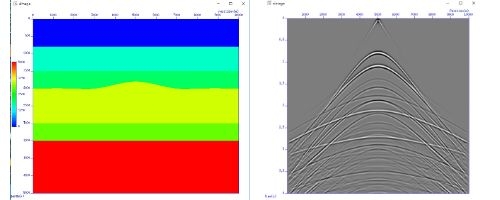
Random source location (left) and ambient noise record (right):
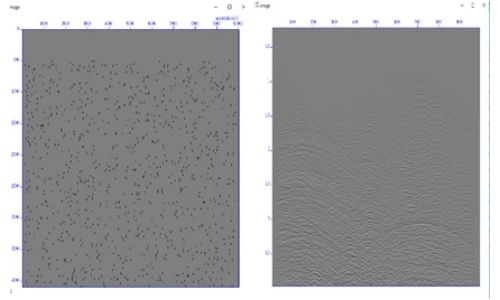
Ricker wavelet shot record (left) and simulated shot record by ambient noise (right):
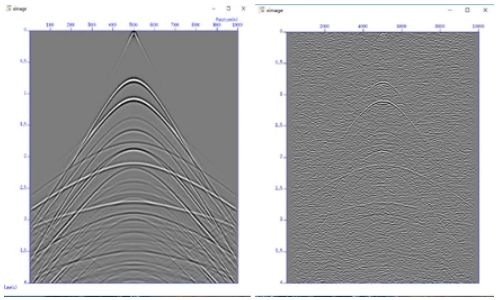
Comparison between simulated profile (left) and velocity model (right):
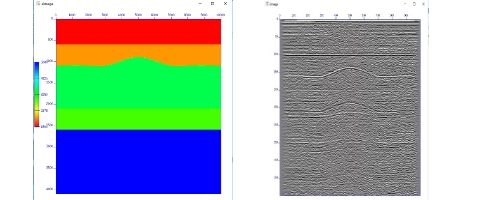
The research group has carried out field trials in a variety of locations and verified the effectiveness of this method by comparing with active acquisition. In the following test, SmartSolo intelligent seismic sensors with 10 meter receiver interval were used to acquire ambient noise; The Record length was 72 hours at 1ms sample rate; The simulated shot length was 5 seconds; The Shot interval was 40 meters; The resulting simulated shots were processed in a traditional way.
Recording geometry:
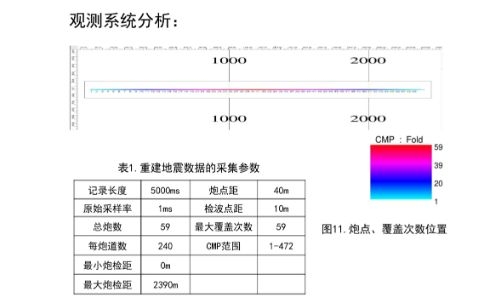
The simulated shot records were processed with the same flow as used for reflection data, including: geometry, noise suppression, amplitude compensation, velocity analysis, stack, pre-stack migration…etc.
Raw simulated shot:

Velocity analysis:
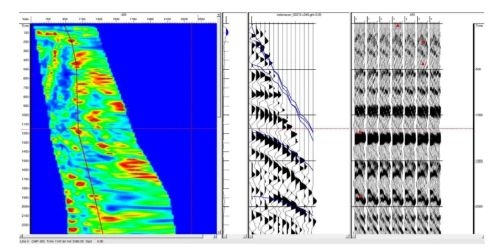
Simulated shot before migration:

Pre-stack section:
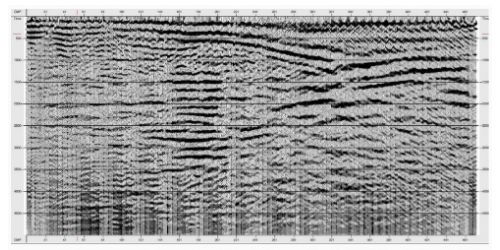
Pre-stack time migration:

The overall frequency content of passive seismic data is less than for active seismic. In order to simplify implementation and make seismic interpretation easier for comparison, the research group used a spread-spectrum method on the dataset.
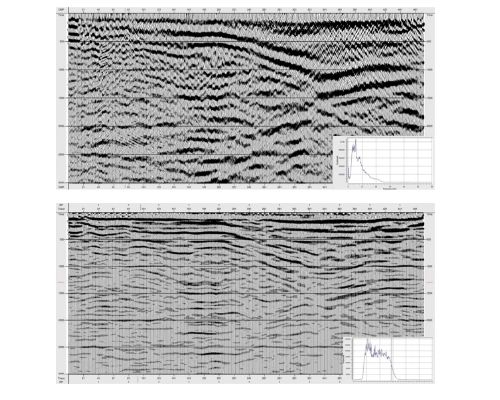
Using the experimentation and case studies outlined above, the research group were able to reveal the advantages of passive source seismic imaging. By employing traditional processing and spread-spectrum methods, a useful reflection profile could be produced.
The SmartSolo intelligent seismic sensor is lightweight, highly reliable, has no external battery connector, and offers long battery life, making passive seismic simpler and easier. We believe this is a strong combination between methodology and equipment, and presents a large potential business value.
Thorbecke, J. W., and D. Draganov, 2011, Finite-difference modeling experiments for seismic interferometry: Geophysics, 76, no. 6, H1–H18.
